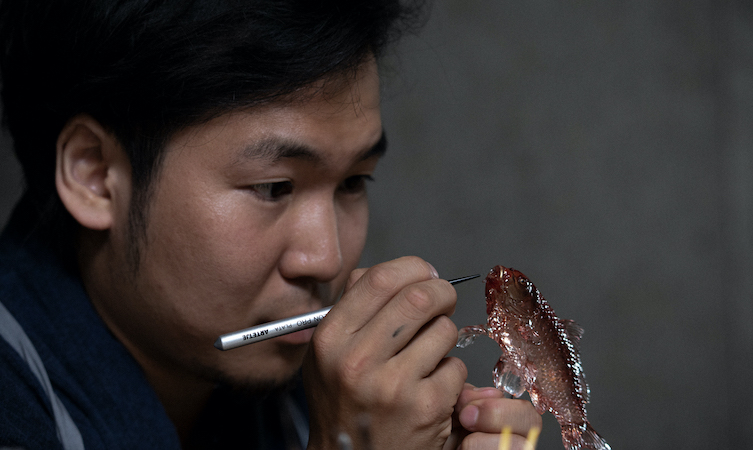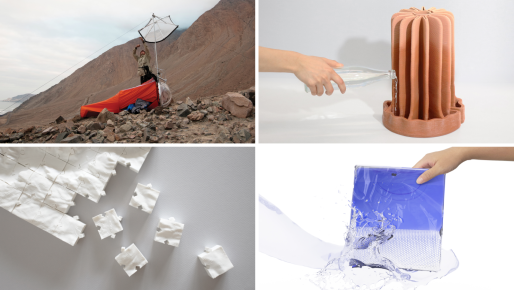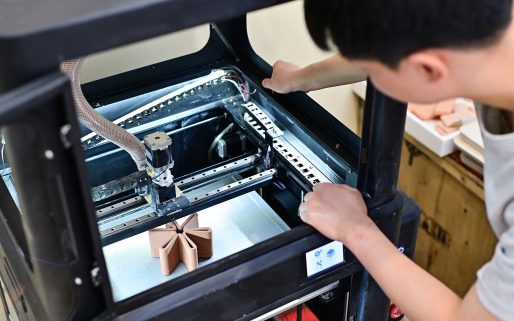Scrolling through Shinri Tezuka’s Instagram feed of stunning frog, goldfish, turtle, and other sculptures, you might think these creatures are the work of a talented glass artisan. Talented, absolutely—but these sweet little things are wrought not of glass but rather of sugar, in the Japanese tradition of amezaiku sugar sculpting. Once a popular street entertainment in the Edo period (1603–1867), it is now practised by a mere handful of artisans around Japan. And no one has perfected the craft as Tezuka has, to something more akin to art than cute lollipops for kids.
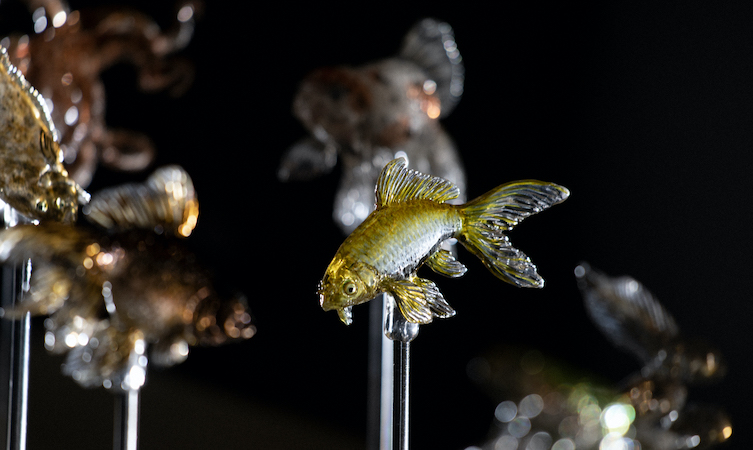
Look closely and you will see deer flying mid-air, goldfish wiggling playfully, and tadpoles squirming with life. All these lollipops are formed within minutes using only his hands and a pair of small scissors.
Tezuka has the same obsession-to-detail and dedication as the Takumi who build Lexus cars, carefully considering every minute detail. The intricacy of his work is reminiscent of the hand-carved Kiriko glass door trim for the Lexus LS, where only an experienced craftsman was able to produce an ornament that created the desired sparkle.
“Timing is probably the hardest part of the craft. The sugar sets completely in just about five minutes, so I need to finish the overall shape pretty quickly,” Tezuka explains.
Read more: Why the Yorozu Tea Salon will always make me think of Lexus
One thing that distinguishes amezaiku from European sugar sculpture is that nothing is cut away or added. The animals are “born” from blobs (Tezuka calls them eggs) of hot 90°C sugar that he cuts from a large pot of molten sugar. He mounts each blob on a glass tube and immediately sets to the task of bringing something like a koi carp to life.
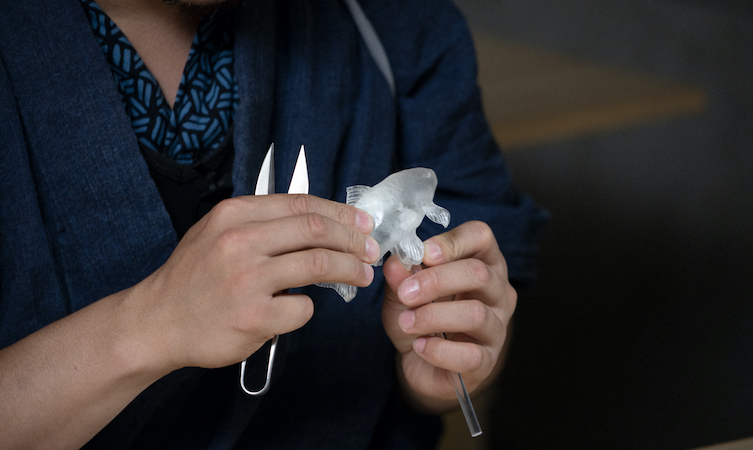
With the precision of a brain surgeon, he snaps two small incisions in the ball of sugar, and two fins sprout forth. He uses the same scissors to carve gentle lines in the fins. In no time the overall shape of the fish is done.
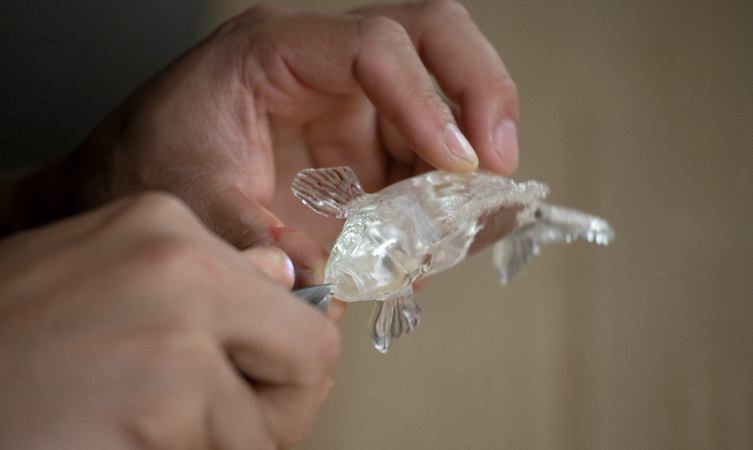
“The first three to four minutes are the most fun to watch,” he explains. After the general shape and the contours of fins and gills are done, Tezuka puts down his scissors and takes up a small blowtorch. He gently melts the surface of the fish, transforming its cloudy matte look to one of clear, glasslike brilliance. He then adds eyes and a mouth and starts the time-consuming chiselling of all the many scales.
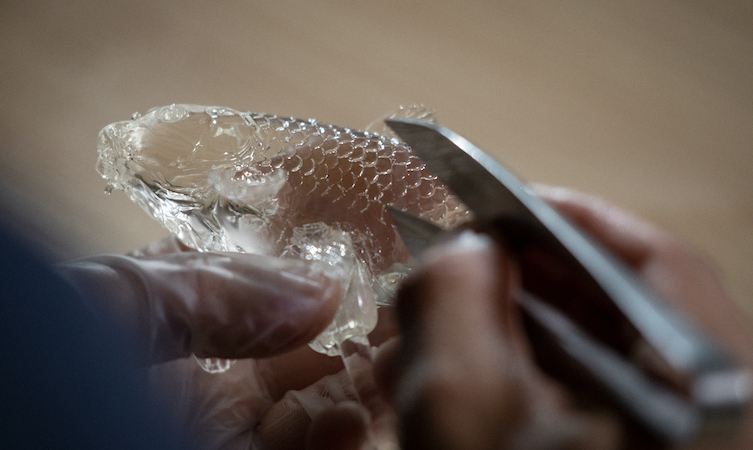
Using the sharpened backside of his scissors, Tezuka sets about the task with quiet determination. Each side is more than half an hour in the making, as he takes extraordinary care to get not only the shape but also the different size of each individual scale just right.
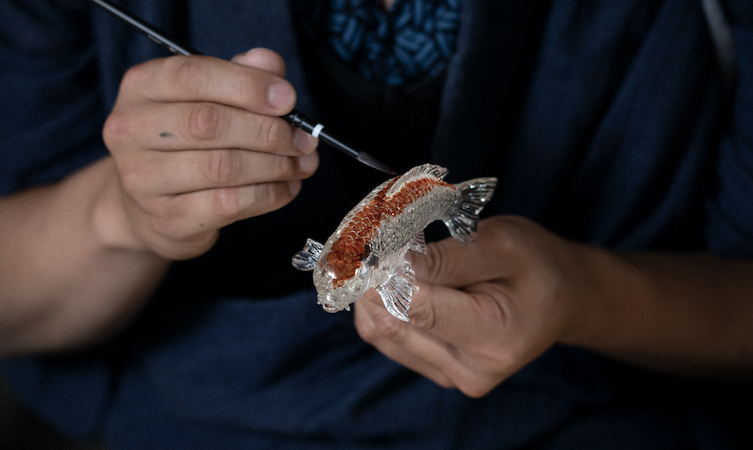
Before setting on this sweet journey, Tezuka was making fireworks for the many summer festivals held across Japan. “Much of the fireworks used in Japan is imported. I wanted to do something more hands-on and thought amezaiku might just be the thing,” he says. From early on, he had liked making things, so the craft came naturally to him. He couldn’t find anyone making crystal-clear sculptures, so he developed his methods all on his own. Since 2010 he has been making a living off of his craft and in 2013 he opened his first shop and studio, in the Asakusa area of Tokyo. This old downtown location now serves as a production space and storage room as he has a new shop close-by and another sales outlet near the Tokyo Sky Tree Tower.

With the shaping and carving of his beautiful koi carp finished, Tezuka sets up a small selection of edible colours and starts to paint his prize. Applying different hues and using silver and gold for highlights, he transforms the glasslike piece to something remarkably close to a real living fish. These lollipops are too beautiful to eat, surely?
